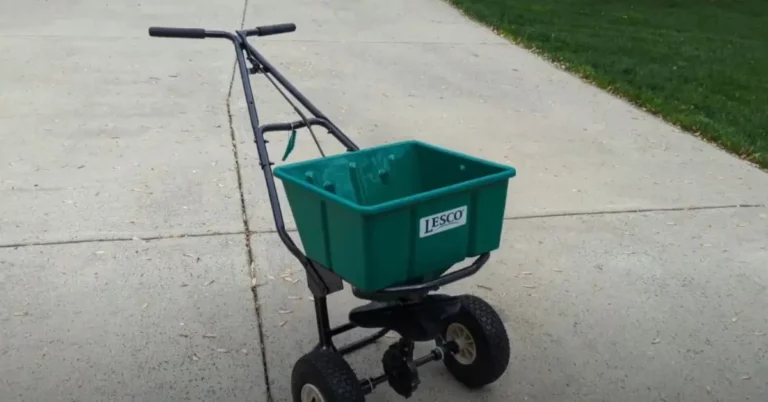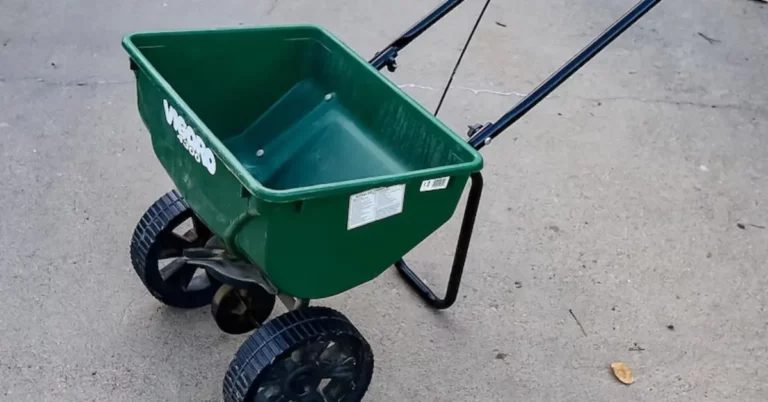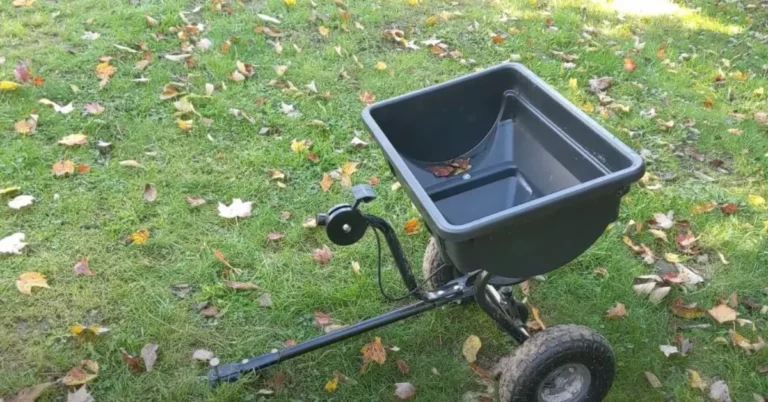Scotts Wizz Spreader Settings Chart (Instructions and Settings List)
If you are a gardener or homeowner, having a well-maintained lawn is always a top priority. With the Scotts Wizz Spreader settings chart, you can easily fertilize and spread seed in your yard.
Following the Scotts Wizz Spreader Settings Chart is important for better results. It provides specific instructions on the appropriate settings for different materials, ensuring that you apply them accurately and efficiently to achieve a healthy and beautiful lawn.
However, adjusting the settings of the spreader can be a daunting task. I got you covered; read on to discover the ultimate guide to the Scotts Wizz Spreader settings chart.
You’ll also learn tips and tricks for better results.
Understand your Scotts Wizz Spreader
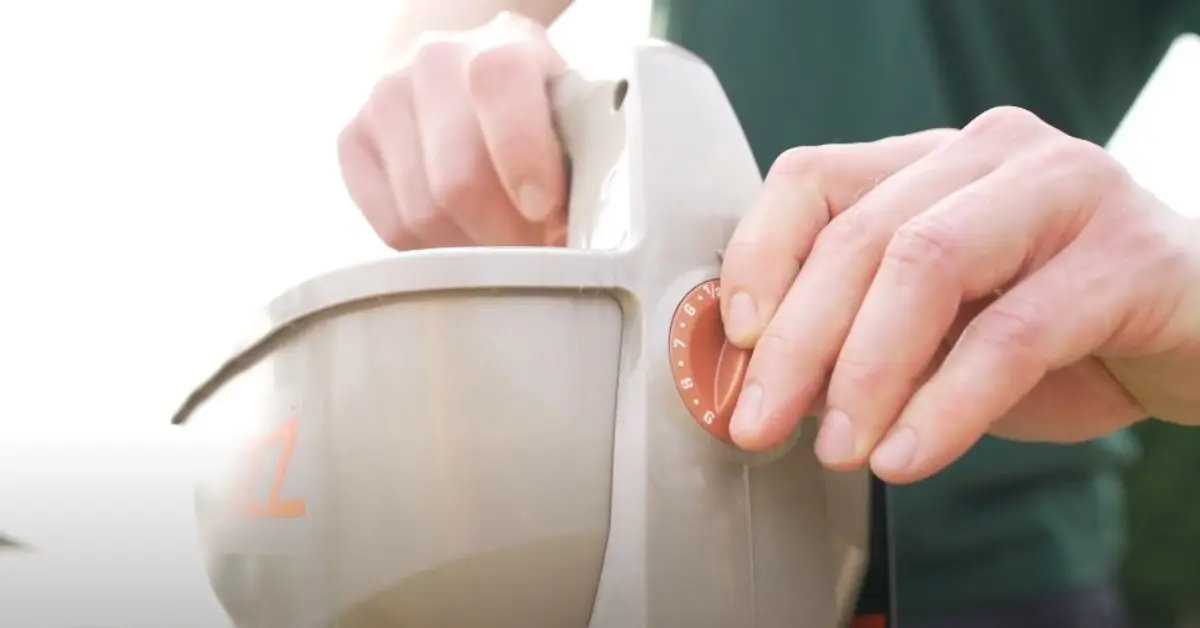
Before you start using your Scotts Wizz Spreader, it is vital to understand how it works.
The Scotts Wizz Spreader is a handheld device with a battery-powered mechanism that helps regulate seed dispersion, granular fertilizer, and ice melter dispersion.
The device’s settings ensure the right amount of material is dispensed on your lawn, eliminating waste and over-application.
Determining your Scotts Wizz Spreader Setting:
Before you start to spread fertilizer or seed on your lawn, it is vital to determine the appropriate spreader setting.
There are two ways to calculate the spreader setting on your Scotts Wizz Spreader.
- The first is by looking up the settings chart in your spreader package or the manufacturer’s website.
- Alternatively, you can conduct a calibration test by filling up your spreader with a known quantity of material and measuring the amount dispersed over a specified area.
Using the Scotts Wizz Spreader Settings Chart
The Scotts Wizz Spreader settings chart is a crucial tool that helps you to determine the correct spreader setting.
The chart factors in the type of material, the density of the material, and the speed you walk, giving you the precise setting for your Scotts Wizz Spreader.
For example, suppose you plan on spreading grass seed on your lawn.
In that case, you would set your spreader to the Grass Seed Section of the chart and follow the corresponding recommended settings.
Also Read: EdgeGuard Mini Spreader Settings (Step-by-Step Guide)
Here’s a chart summarizing the Scotts Wizz Spreader Settings:
| Product | Recommended Setting |
| Seed | Light overseeding and new lawns: 2-3. Heavy overseeding and bare spots: 4 |
| Lime | 2-3 |
| Fertilizer | 4.5 |
| Lawn Food | 4-5 |
| Tall Fescue Grass Seed | 4 |
| Weed & Feed | 4-5 |
| Crabgrass Preventer | 4.5 |
Scotts Wizz Spreader settings for Seed,
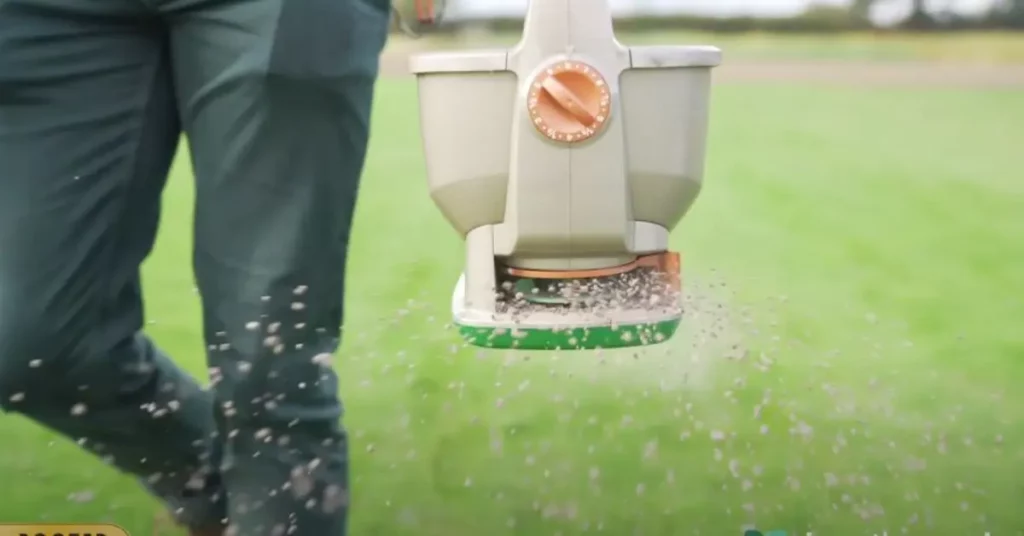
The most recommended Scotts Wizz Spreader settings for seeding, are 2-3 for light overseeding and new lawns, while 4 would be for heavy overseeding and bare spots.
Remember that different brands and types of grass seeds may have different recommendations, so it is always best to double-check with the product label.
Scotts Wizz Spreader Settings for Lime
Lime is an essential product for maintaining the pH balance of your soil. If your soil is too acidic, lime helps neutralize it.
The recommended setting for spreading lime with the Scotts Wizz Spreader is 2-3. Again, it’s always best to double-check with the product label and adjust accordingly.
Scotts Wizz Spreader Settings for Fertilizer
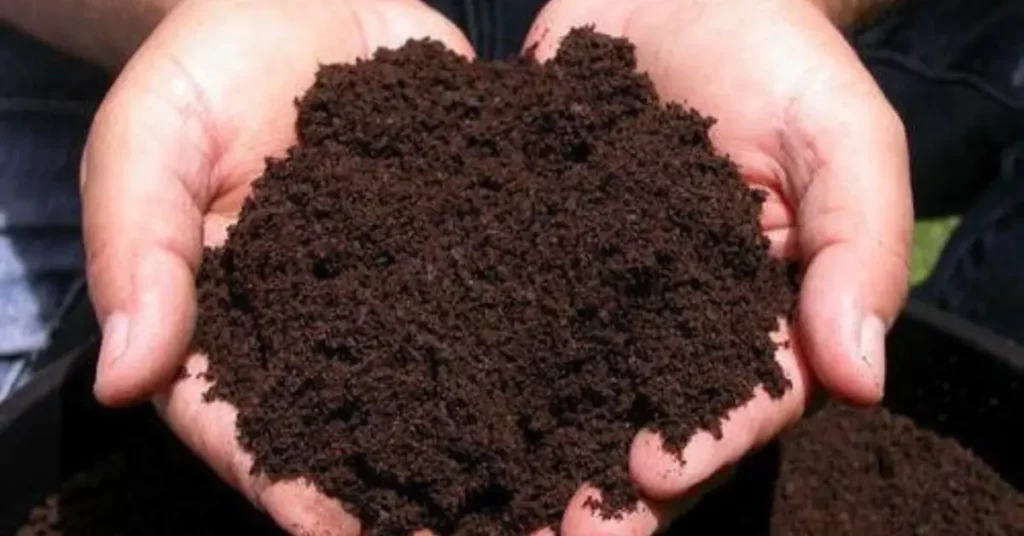
Fertilizer is the most commonly used product for lawn maintenance, and the correct use of the Scotts Wizz Spreader helps ensure even product distribution.
Based on Scotts’ recommended setting chart, the most common setting for fertilizing with Scotts Wizz Spreader is 4.5, but always double-check the product label.
Scotts Wizz Spreader Settings for Lawn Food
Scotts Wizz Spreader is an excellent tool for spreading lawn food evenly and uniformly on your lawn. The recommended setting for lawn food is between 4 -5.
Read the label carefully to ensure you are using the right product in the proper setting.
Scotts Wizz Spreader settings for Tall Fescue Grass Seed
Different grass seeds have different planting rates, meaning different spreader settings.
The recommended spreader setting for planting tall fescue grass seed is 4, but double-check with the product label before spreading.
Settings for Weed & Feed
Weed & Feed is essential for removing weeds and fertilizing your lawn.
The recommended Scotts Wizz Spreader setting for spreading a weed & feed product is 4-5, but again, always double-check with the product label.
Settings for Crabgrass Preventer
Crabgrass is a stubborn weed that can be challenging to eliminate once it has taken over your lawn.
The best method to prevent crabgrass is by using a pre-emergent crabgrass preventer.
For that, a recommended Scotts Wizz Spreader setting is 4.5, but double-check with the product label.
Important Scotts Wizz Spreader Settings Tips
Proper fertilization is crucial When achieving a lush lawn. And using a spreader, like the Scotts Wizz Spreader, can make this task more efficient and effective.
However, you could have uneven coverage and a patchy lawn without the proper spreader settings.
I’ve put together this ultimate guide to Scotts Wizz Spreader settings, so you can easily achieve a beautiful lawn.
1. Understanding the Dial Settings
The Scotts Wizz Spreader allows you to adjust the fertilizer or seed application rate using the dial on the handle.
The settings on the dial range from 1 to 10, with 1 being the smallest dispersal and 10 being the largest dispersal. Always start with a lower setting and work your way up.
Additionally, different products may require different settings, so read the instructions on your fertilizer and adjust accordingly.
2. Accounting for Walk Speed
Your walking speed influences the Scotts Wizz Spreader. The faster you walk, the less product will be dispersed.
You should walk at a steady pace of 3 feet per second to ensure even application. In addition, if you come across an area already covered, slow down your pace to avoid over-application.
Also Read: Agri-Fab Spreader Settings Chart – Complete Guide
3. Mastering Patterns and Overlap
You should apply the product in a criss-cross pattern to ensure even coverage. Start by walking the perimeter of the lawn and work your way inward.
When you return to the starting point, overlap your previous path by 10-15%. This will ensure no missed areas, and you’ll get uniform coverage.
4. Applying the Right Conditions
The environment you’re applying your fertilizer can directly affect the efficiency of your Scotts Wizz Spreader.
On a windy day, it’s recommended that you reduce the dial setting to avoid over-applying a specific area.
In addition, after a rain shower, wait for your lawn to dry before applying fertilizer or seed. If the temperature is above 85°F, it’s recommended that you apply product in the early morning or late afternoon when the temperature is cooler.
5. Clean up and Storage
After using your Scotts Wizz Spreader, clean it thoroughly to avoid rusting or damage.
Rinse all parts of the spreader with water and dry thoroughly before storing. Then, store your spreader in a dry, covered area to prevent any rain or sun exposure damage.
What do Scotts spreader settings mean?
First, let’s understand what Scotts spreader settings are. Different grass seeds and fertilizers require different settings to be spread evenly.
The settings are based on the spreader’s flow rate, which depends on the size and weight of the seed or fertilizer used.
Scotts spreader settings, therefore, are a calibration of opening size to determine the rate that the material is dispensed from the hopper.
How to use Scotts spreader settings?
To use Scotts spreader settings, start by measuring the amount of grass seed or fertilizer needed to cover the area.
Then, locate the spreader setting number listed on your product packaging. Alternatively, you can find the settings on the Scotts website.
Once you have the correct setting, adjust the spreader’s control lever to that number. It’s also important to keep the spreader’s speed constant while walking and slightly overlap distribution patterns for a more uniform application.
Also Read: Vigoro Spreader Settings – Tips to Achieve Better Results
Frequently Asked Questions (FAQs)
What setting should I set my Scotts spreader?
The setting depends on the product and the size of the area being treated.
For instance, if you’re using a Scotts Turf Builder fertilizer on a regular size lawn, the recommended spreader setting is 5.
However, the setting would be lower for the same product on a smaller lawn.
How do you use a Scotts spreader?
To use a Scotts spreader, pour the product into the hopper and adjust the control lever to the recommended setting.
Push the spreader forward while holding onto the handle.
Ensure the spreader’s speed is constant, and the distribution overlaps slightly for a more uniform application.
Clean the hopper and spreader once you’ve finished spreading to avoid corrosion.
What setting should Scotts spreader grass be set at?
Different grass seed varieties have different spreader settings.
For instance, A Scotts Turf Builder Sun and Shade Mix have a setting of 7.25 for most spreaders.
The precise setting for your spreader depends on its make and model, plus the size of the lawn it needs to cover.
Conclusion
A well-maintained lawn is within your reach with the Scotts Wizz Spreader. Using the spreader setting chart, you can effortlessly spread seed, fertilizer, and ice melt on your lawn.
The recommended settings for various products, such as seed, lime, fertilizer, lawn food, tall fescue grass seed, weed & feed, and crabgrass preventer, provide a great starting point.
However, always read the label to ensure you use the appropriate product at the right setting for your lawn. Follow this guide, and enjoy a healthy, beautiful lawn.

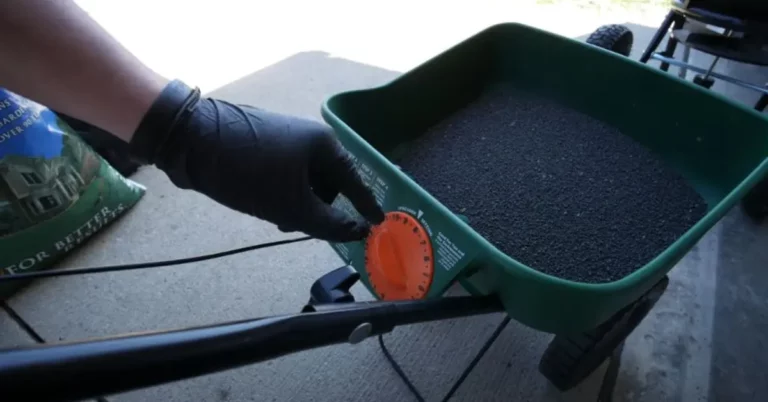
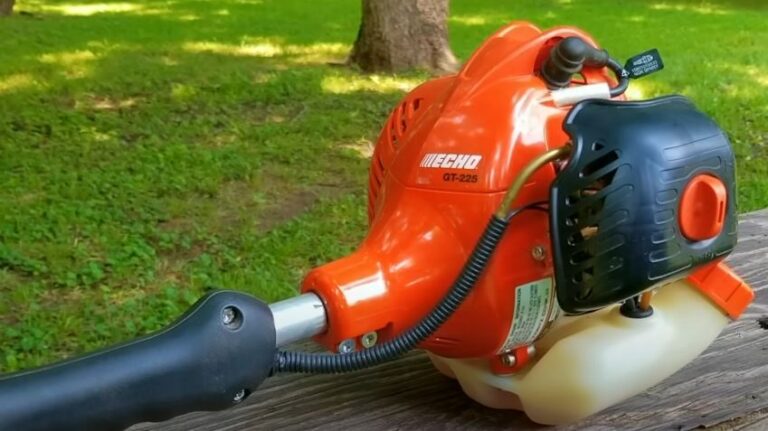
![Husqvarna Weed Eater Fuel Mix Ratio – [Easy Way to Calculate]](https://yardcurator.com/wp-content/uploads/2023/02/Husqvarna-Weed-Eater-Fuel-Mix-Ratio-Easy-Way-to-Calculate.webp)
